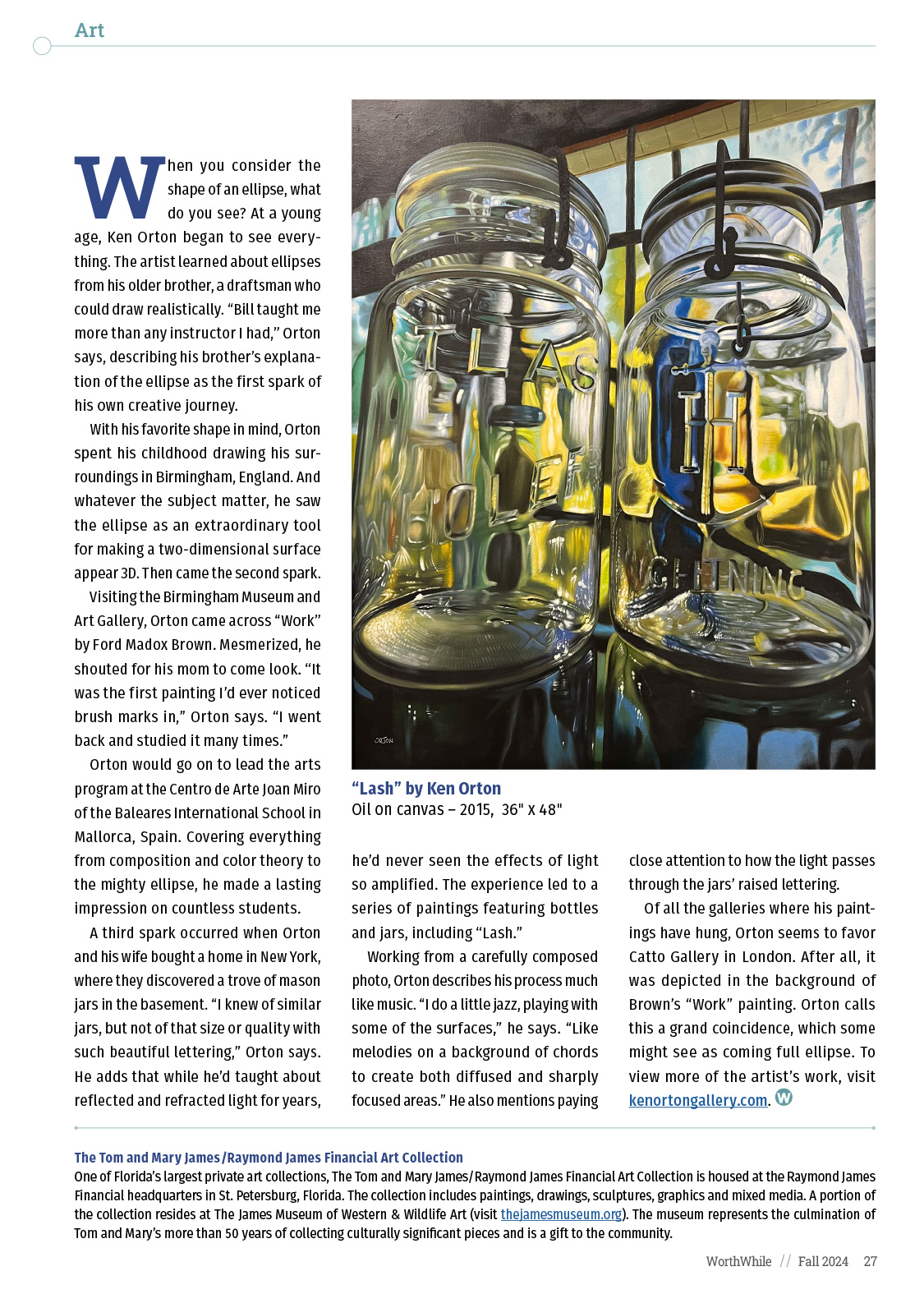Features
Art Feature: Ken Orton
Article for WorthWhile magazine highlighting the artist and his work.
WorthWhile is a quarterly publication from Raymond James Financial.

View Copy
When you consider the shape of an ellipse, what do you see? At a young age, Ken Orton began to see everything. The artist learned about ellipses from his older brother, a draftsman who could draw realistically. “Bill taught me more than any instructor I had,” Orton says, describing his brother’s explanation of the ellipse as the first spark of his own creative journey.
With his favorite shape in mind, Orton spent his childhood drawing his surroundings in Birmingham, England. And whatever the subject matter, he saw the ellipse as an extraordinary tool for making a two-dimensional surface appear 3D. Then came the second spark.
Visiting the Birmingham Museum and Art Gallery, Orton came across “Work” by Ford Madox Brown. Mesmerized, he shouted for his mom to come look. “It was the first painting I’d ever noticed brush marks in,” Orton says. “I went back and studied it many times.”
Orton would go on to lead the arts program at the Centro de Arte Joan Miro of the Baleares International School in Mallorca, Spain. Covering everything from composition and color theory to the mighty ellipse, he made a lasting impression on countless students.
A third spark occurred when Orton and his wife bought a home in New York, where they discovered a trove of mason jars in the basement. “I knew of similar jars, but not of that size or quality with such beautiful lettering,” Orton says. He adds that while he’d taught about reflected and refracted light for years, he’d never seen the effects of light so amplified. The experience led to a series of paintings featuring bottles and jars, including “Lash.”
Working from a carefully composed photo, Orton describes his process much like music. “I do a little jazz, playing with some of the surfaces,” he says. “Like melodies on a background of chords to create both diffused and sharply focused areas.” He also mentions paying close attention to how the light passes through the jars’ raised lettering.
Of all the galleries where his paintings have hung, Orton seems to favor Catto Gallery in London. After all, it was depicted in the background of Brown’s “Work” painting. Orton calls this a grand coincidence, which some might see as coming full ellipse. To view more of the artist’s work, visit kenortongallery.com.